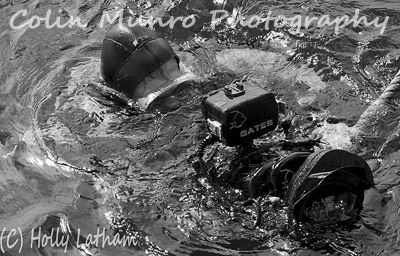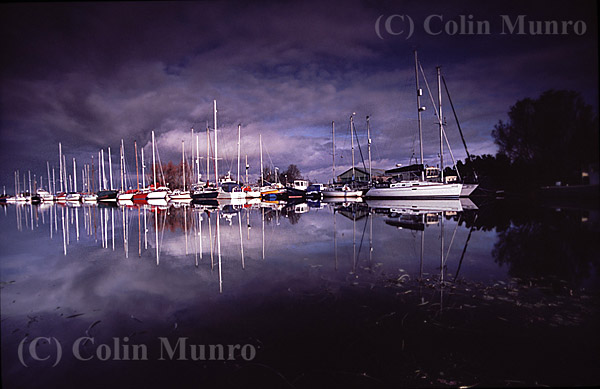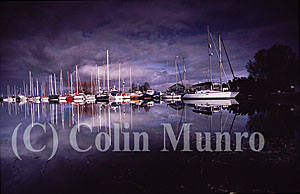Pacific harbour Lagoon, Viti Levu, Fiji. The story behind one of my favourite images and a link to buy fine art prints and wall art of this image at colinmunroimages.com
Some of the photographs I am most pleased with come completely unexpectedly. I found myself in the tiny settlement of Pacific Harbour, on the south coast of Viti levu, Fiji’s largest island, not to take landscape photographs but to try and capture images of bull and tiger sharks with the nearby diving operation, Beqa Adventure Divers. The dives went ahead, and were very successful, the dive operation was extremely professional and I gained some excellent shots. But that story is not what this blog is about. This is about the shot below, and how it came be.

After dinner the previous evening I had retired to my room to begin preparing my camera equipment. For every professional photographer this is a ritualistic affair, and especially so for underwater photographers where one un-noticed hair across an ‘o’ ring seal, or one grain of sand lurking in the shadows of a machined seal groove can not only result in you gaining no images whatsoever, it is also likely to spell the death of your very expensive camera and lens, rendering irretreivably seizing delicate mechanisms and shorting multiple electronic circuits. By the same token, the camera is controlled by a series of sealed buttons, levers and gears, all precisely aligned to facilitate operation through the metal housing. A millimetre misalignment in setup, and one can find oneself frantically operating a control at a crucial moment … with nothing happening and no way to resolve the problem underwater. So cleaning, assembling and checking camera systems becomes a quasi-religious ritual. Once finally satisfied with my endevours, I retired for an early night. Adrenaline was coursing in my veins however, so despite the previous days long road journey I woke early. Through the glass doors of my room I could see it was still dark, with just a slight reddish tinge low in the sky. But I was wide awake and the pre-dawn was filled with sound; frogs, insects and birds I did not recognise croaked, chirped and called, irresistibly beconing me out. So I dressed quickly, grabbed my land camera, my first digital SLR (my underwater camera was still a film camera back then, the iconic Nikon F4). I checked the settings and battery power and headed out. Padding across the dew laden grass I arrived at the edge of the lagoon in only a couple of minutes. I could see mudskippers perched on the roots of mangroves, plopping into the water below as soon as I approached. At that point I had no clear idea what I wanted to photograph. As this was planned as purely a diving trip I did not have a suitable lens for capturing small mudskippers or any shy wildlife with me. It was more about enjoying the early morning and having a camera with me, just in case. As I stood at the water’s edge, watching mudskippers and fiddler crabs feeding on the soft mud, I could also see the sky change. The sky above me lightened to a deep cyan, while just above the silhoutted mangroves and palms it turned deep burned orange while whispy clouds stood out deep gunmetal blue. And all this was reflected in the still lagoon waters. I took shot after shot. Every minute the sky would look quite different from the previous. Back then digital SLRs did not have the electronics to to produce noise free images at high ISOs, so I was shooting at ISO 125 to keep the images clean and faithful. To compensate in the low light I was shooting with the lens wide open at a 50th of a second, stabilising myself against a tree. I remained there for what seemed like an hour but was in fact no more than 20 minutes; the sun comes up fast in the tropics. As the sun cleared the trees I headed back to my room and the breakfast.
The rest of the day was a frenzy of activity. The shark dives can wait for another blog, except to say that I did indeed flood the housing of my underwater video (but not my stills camera) through some carelessly missed specs of grit in the seal. Only the third time in my life I have done that after around a thousand dives. So my video camera became a beautifully machine piece of Sony engineering reduced to scrap metal and glass. It was almost a week later I was finally able to download and start to go through the images I took at dawn. Although many were extraordinarly beautiful, the one shown here, for me, was the stand out. I photograph dawns and sunsets rather a lot, and often in quite remote and magnificent locations, but I have never since observed a dawn quite like that morning.
Fine Art Prints and Wall Art
If you like the image of Pacific harbour Dawn, it is available to purchase in a wide range of media and sizes directly from my website. These include as traditional giclée prints, stretched and flat mounted canvas, metal prints (dye directly infused on sheet aluminium) and acrylic, from 8 inches up to 48 inches across. My prints are produced by Bay Photo Labs in Santa Cruz, California. I choose bay Photo Labs for the excellence of their quality, with over 40 years providing printing services to professional photographers, their constant innovation, combining the latest technology and innovation with the finest traditional techniques, and their committment to the highest environmental standards using green technology. You can buy my prints directly here at www.colinmunroimages.com. If you are outside of North America, and would prefer a printer in your region, please contact me directly. I will be adding printers in Europe and S.E. Asia soon.
And the shark dive? Okay, here’s one image.








